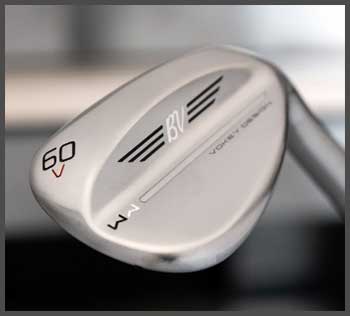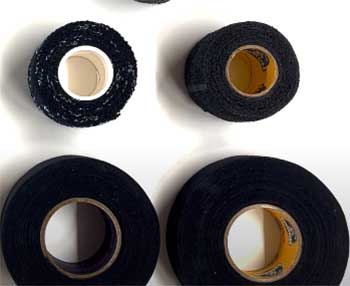In the vast world of golf equipment, wedges have an exceptional ability to make or break your game. And speaking of wedges, few names are as respected as Titleist Vokey. Today, we’ll delve into the specifics of two popular wedge grinds: the Vokey V and D grind.
We’ll examine their key features, their pros and cons, and attempt to answer your most pressing questions about these fan-favorite wedges.
A Brief Comparison Table
| Features | Vokey V Grind | Vokey D Grind |
| Design | ‘V’ shaped sole, continuous bounce angle | Crescent or ‘D’ shaped sole, high measured bounce |
| Best For | Soft conditions, steep swings | Soft conditions, steep swings |
| Versatility | Excellent, due to balanced bounce and camber | Excellent, performs well in various lies |
| Performance in Soft Conditions | Excellent | Excellent |
| Performance in Firm Conditions | May struggle | May struggle |
| Swing Type | Steep swings | Steep swings |
| Interaction with Turf | Slices through the turf efficiently | Prevents digging into the turf |
Understanding The Vokey V Grind

Let’s kick things off with the Vokey V grind.
To make sense of what ‘V grind’ means, consider the interaction between the club, the turf, and the ball. In Vokey V grind wedges, the sole of the club has a ‘V’ shape.
This is designed to cut through turf more efficiently, enhancing the club’s performance in steep or soft conditions.
Pros of Vokey V Grind
- Excellent for Steep Swings and Soft Conditions: The V grind shines in situations where you need to dig deep, like steep swings or softer turf conditions. It slices through the turf with less resistance, offering you greater control.
- Versatility: The V grind’s bounce and camber are balanced, meaning you can open the clubface without worrying about too much leading-edge lift. This feature makes it more versatile, and you can use it in multiple shot scenarios.
Cons of Vokey V Grind
- Not Ideal for Shallow Swings or Firm Conditions: This wedge may not perform as efficiently with shallow swings or on firm turf. It could dig too much into the ground, affecting your control and accuracy.
A Deep Dive into the Vokey D Grind
Shifting our focus to the Vokey D grind, this option is characterized by a high measured bounce with a crescent shape, making it excellent for golfers with a steeper angle of attack. D grind signifies the club’s shape when viewed from the back: it resembles the letter ‘D’.
Pros of Vokey D Grind
- High-Bounce Design: The D grind’s high-bounce design is perfect for steep swings and softer turf conditions. You’ll appreciate how it prevents digging and enhances your shot’s lift.
- Versatile in Multiple Lies: The D grind is also versatile and performs well in various lies, from bunkers to thick rough. Its enhanced lift capabilities help you get out of these tricky situations.
Cons of Vokey D Grind
- Might Not Perform Well in Firm Conditions: The D grind wedge can struggle a bit in firm conditions due to its high-bounce design. The club may not get under the ball as efficiently, which might affect the shot’s quality.
Also Read: Differences Between Srixon ZX7 And ZX7 Mk II Irons.
Key Differences Between Vokey V Grind And D Grind
Even though both the Vokey V and D grinds cater to specific swing types and course conditions, they each have unique characteristics that set them apart. To truly understand these grinds, we need to delve into their specific features and differences.
- The Design
Vokey V Grind
The Vokey V grind’s defining characteristic is its ‘V’ shaped sole, which slices through the turf, providing a cleaner contact and a more predictable interaction with the ground.
The V shape design is achieved by a continuous bounce angle from heel to toe, with the mid-bounce ideal for golfers who play in soft turf conditions or have a steep angle of attack.
Vokey D Grind

Vokey D grind, on the other hand, is characterized by a crescent shape or the ‘D’ shape that gives it its name.
The wedge has a high measured bounce, which combines with the crescent shape to offer a wider sole near the back and a thinner leading edge.
This design is excellent for golfers who play in softer conditions or have a steep swing path.
- Versatility
Vokey V Grind
The V grind is designed with versatility in mind. With balanced bounce and camber, you can open the clubface without excessive leading-edge lift. This lets you take various shots and adapt to different situations on the course.
Vokey D Grind
The D grind also shines when it comes to versatility. It’s the player’s wedge, excellent in a variety of lies from bunkers to thick rough. The high bounce and wider sole allow the club to slide under the ball easily, helping you escape tricky situations on the course.
- Performance
Vokey V Grind
The V grind is a star performer when it comes to soft turf conditions or for players with a steep angle of attack. However, it might not be the best choice for firm conditions or players with a shallow swing, as it could dig too deep, affecting your shot’s control and accuracy.
Vokey D Grind
The D grind thrives in softer conditions with its high-bounce design, preventing digging and improving the lift of your shots. However, in firm conditions, the high-bounce design might struggle as it may not get under the ball efficiently.
Also Read: Comparison of Takomo 101 and 201 Irons.
Frequently Asked Questions (FAQ)
V grind refers to the shape of the wedge’s sole. The V shape allows the club to cut through turf more efficiently, making it suitable for soft conditions and steep swings.
The D grind has a high measured bounce with a crescent shape. It’s perfect for golfers with a steeper angle of attack, offering excellent lift and preventing digging into the turf.
In the context of Titleist, the D grind is one of the design options in their Vokey wedges range. It signifies the shape of the wedge’s sole, which resembles the letter ‘D’. It’s excellent for softer conditions and steep swings.
Tour players usually use a mix of grinds depending on the course condition and their swing type. It’s common to see them using F, S, M, K, or even L grinds. However, it’s worth mentioning that many tour players have their clubs custom fitted, which might not be standard models available to the public.
The Takeaway
When it comes to choosing between the Vokey V and D grind, your personal preferences and the conditions you frequently play in should dictate your choice. Experimenting with both could be a wise strategy to figure out which one works best for you.
As with any golf equipment, the best choice is the one that improves your game and boosts your confidence on the course.


